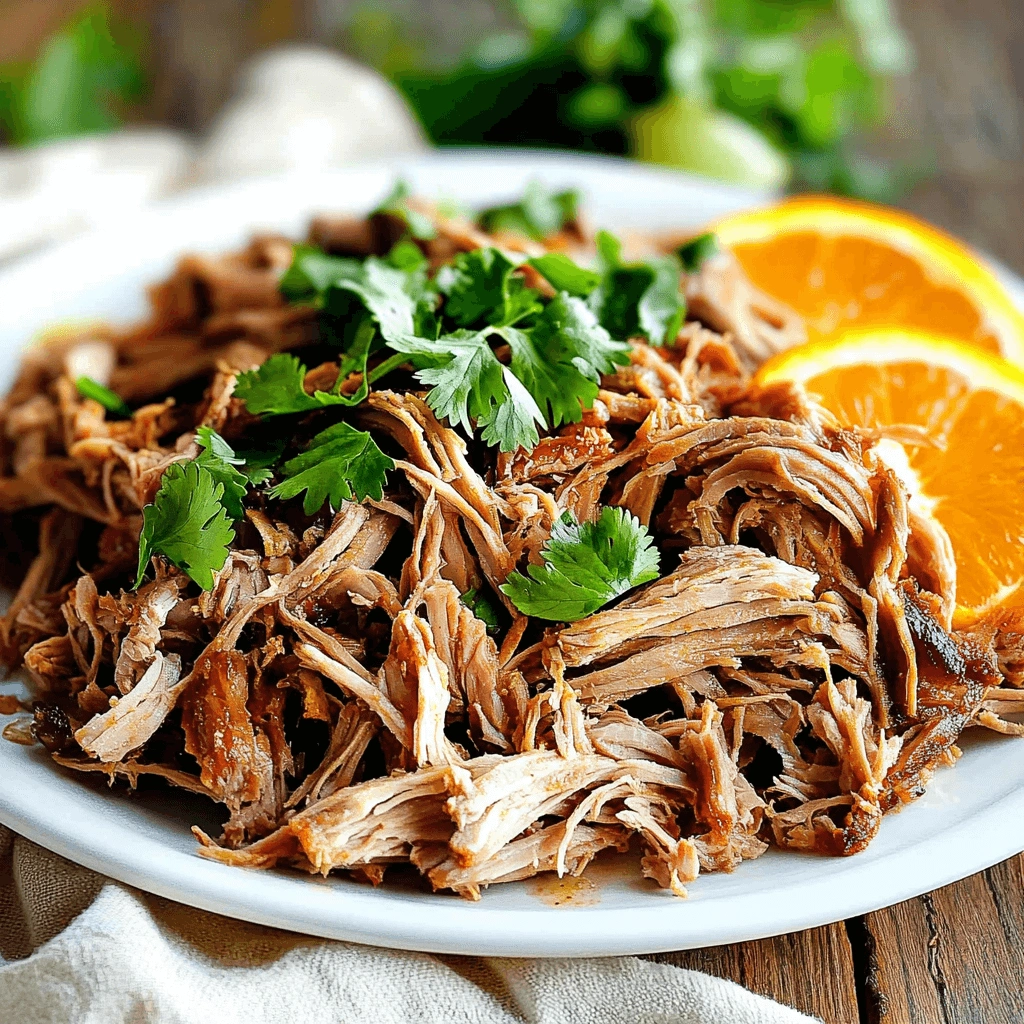Why Do You Put Orange Juice in Carnitas? A Historical Perspective
The Origins of Why Do You Put Orange Juice in Carnitas
Carnitas, a staple in Mexican cuisine, has a rich history tied to the country’s culinary traditions. A key part of this dish is the use of orange juice. But why do you put orange juice in carnitas?
The practice began in pre-Columbian times when indigenous people used fruits to enhance flavors and preserve food. When the Spanish introduced beef, it revolutionized local cuisine, leading to iconic dishes like carnitas.
So, why do you put orange juice in carnitas? It’s simple—orange juice tenderizes the beef and balances its richness with sweetness and acidity. Over the years, it has become a defining ingredient in authentic carnitas recipes.
Related Reading: For ideas on balancing flavors, take a look at Perfect Rice Krispie Treat Recipe.
Regional Variations
Interestingly, different parts of Mexico have adapted carnitas recipes to fit local tastes. For example:
- Michoacán: Known as the birthplace of carnitas, cooks here often rely on orange juice to bring out the perfect balance of flavors and keep the beef
- tender.
- Jalisco: In this region, a combination of lime and orange juice is frequently used to give the dish a tangier twist.
- Yucatán: Here, sour oranges, native to the area, replace sweet oranges, resulting in a slightly bitter yet aromatic flavor.
Explore More: Want to see how orange enhances savory dishes? Check out the Spicy Orange Chicken Recipe Guide.
Cultural Significance
In Mexican culture, food is more than nourishment; it brings people together. Carnitas, for example, is often prepared during celebrations and family gatherings. The use of orange juice in this dish reflects a broader cultural value: the importance of blending flavors harmoniously. Moreover, the long, slow cooking process of carnitas mirrors the patience and care shared in family traditions.
The Science Behind Why Do You Put Orange Juice in Carnitas?
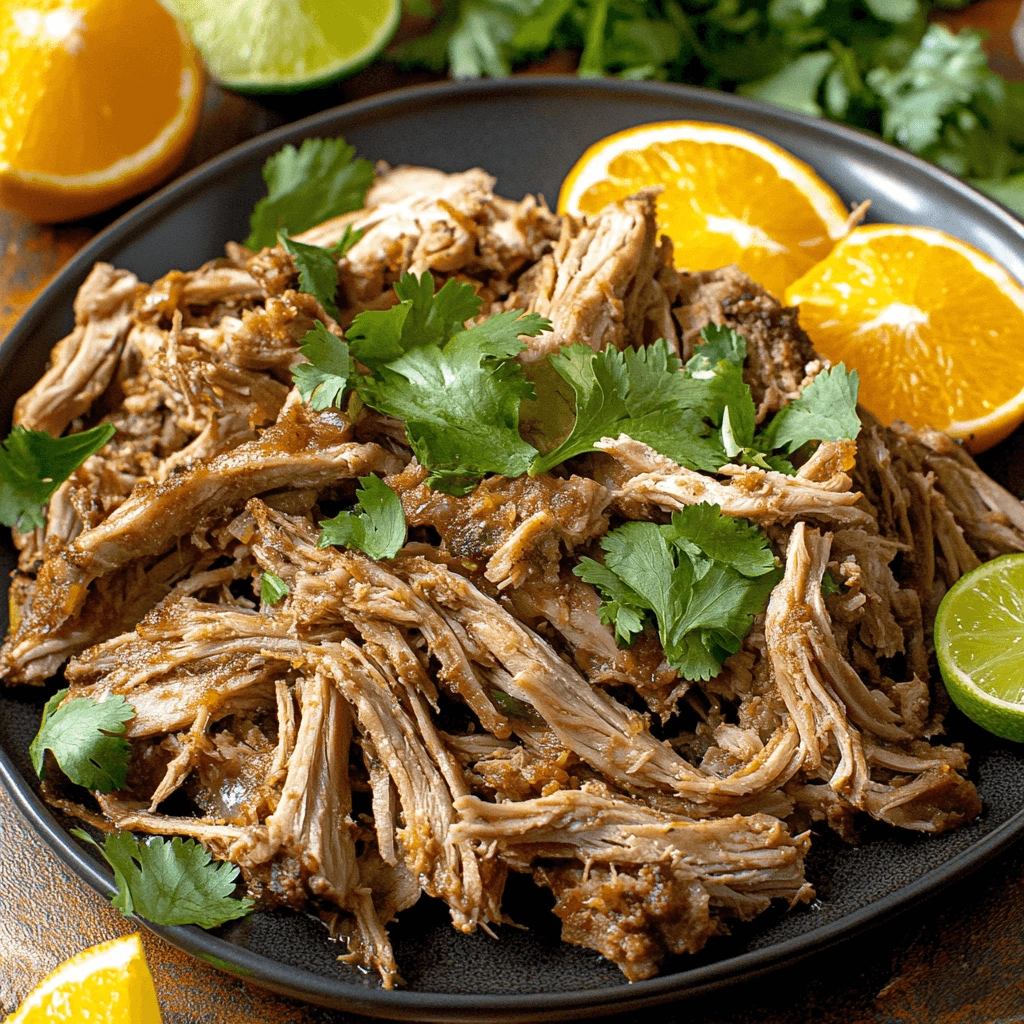
Tenderizing Effects
One reason why do you put orange juice in carnitas is its effectiveness in softening beef due to its citric acid content. This acid breaks down tough protein fibers in the meat, making it tender and easy to chew. Additionally, the natural enzymes in orange juice penetrate the meat, ensuring every piece is flavorful and juicy. This explains why do you put orange juice in carnitas to achieve a delicious and tender dish.
Related Topic: See how citrus enhances other dishes like Panda Express Hot Orange Chicken.
Why Do You Put Orange Juice in Carnitas to Enhance Taste?
Another reason why do you put orange juice in carnitas is the balance it brings to the dish. The natural sweetness in the juice caramelizes beautifully during cooking, creating a rich depth of flavor. At the same time, the acidity cuts through the beef’s richness, preventing the dish from feeling overly heavy. This balance is a key reason why do you put orange juice in carnitas to achieve a flavor profile that is both hearty and refreshing.
Why Do You Put Orange Juice in Carnitas for a Crispy Finish?
As the beef cooks, the sugars in the orange juice play a key role in caramelization. This process creates a crispy, golden crust on the outside while keeping the inside tender. It’s this contrast in textures that makes carnitas so enjoyable.
Try This Too: Learn more about creating texture in dishes with Perfectly Round Mini Pancakes Tips.
How Much and Why Do You Put Orange Juice in Carnitas?
Proportions
Getting the right amount of orange juice is important for achieving the best flavor and texture. A general rule is to use one cup of orange juice for every two pounds of beef. This ratio allows the juice to enhance the dish without overpowering the other ingredients.
Why Do You Put Fresh Orange Juice in Carnitas?
Fresh orange juice is often preferred because it has no added sugars or preservatives. However, store-bought orange juice can work in a pinch. If using processed juice, choose one labeled “100% juice” to avoid unwanted additives.
Why Do You Put Orange Juice in Carnitas Based on Beef Type?
Different cuts of beef absorb orange juice differently. Fatty cuts like beef shoulder are ideal because they retain moisture and flavor well. In contrast, leaner cuts, such as beef loin, may need less orange juice to avoid overpowering their natural taste.
Pro Tip: Learn about ingredient balance in How to Make Beef More Tender in a Crockpot.
Substitutes
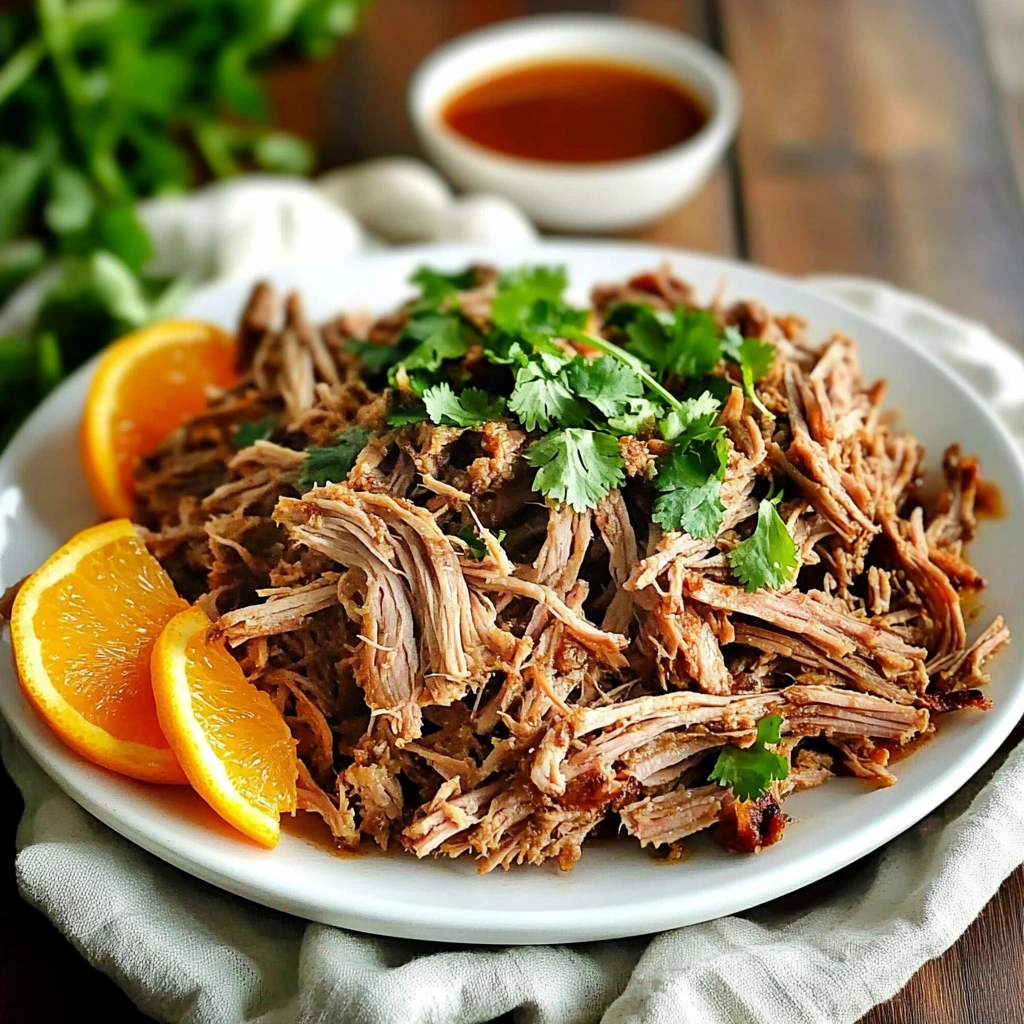
Lime or Lemon
Lime and lemon juices are popular swaps for orange juice in carnitas. While they add a stronger acidity, their sharp flavors can be balanced by adding a small amount of sugar or honey.
Flavor Profiles
Grapefruit juice can offer a unique flavor to carnitas. Its slight bitterness complements the sweetness of beef, providing an exciting variation on the traditional recipe.
Discover New Twists: Explore flavor options with What Add Bland Chicken Casserole.
Common Mistakes
Timing Issues
Adding orange juice at the wrong time is a common mistake when preparing carnitas. This is why do you put orange juice in carnitas during the slow-cooking or braising phase. At this stage, its enzymes effectively tenderize the meat. Adding it too early can cause the beef to break down too much while adding it too late might lead to uneven flavor distribution. Understanding why do you put orange juice in carnitas at the right moment is key to achieving the perfect balance of texture and taste.
Related Tip: Struggling with timing in recipes? Check out Why Are My Homemade Rice Crispy Treats So Hard? for insights on common cooking pitfalls.
Why Do You Put Orange Juice in Carnitas at a Controlled Heat?
Cooking carnitas at the wrong temperature is another common mistake that can affect the final dish. This is why do you put orange juice in carnitas and cook it at a controlled, consistent temperature. High heat can cause the orange juice to caramelize too quickly, resulting in a dry texture and burnt flavors. On the other hand, cooking at a temperature that’s too low may prevent the natural sugars and acids in the juice from activating, leading to bland carnitas with little depth of flavor.
Maintaining a medium-low heat is essential to allow the orange juice to tenderize the beef gradually and caramelize at just the right time. This balance ensures the meat becomes tender and juicy while developing the rich, crispy edges that make carnitas so irresistible. This controlled approach is one of the reasons why do you put orange juice in carnitas—to let its unique properties enhance the dish without compromising the texture or flavor. Cooking at the right temperature is as important as the ingredients themselves, ensuring every bite of your carnitas is flavorful and perfectly cooked.
Choosing Quality
The quality of orange juice plays a vital role in determining the success of your carnitas. This is why do you put orange juice in carnitas and choose freshly squeezed juice for the best results. Fresh orange juice provides a natural sweetness and acidity that processed options often fail to deliver. Store-bought juices may contain added sugars, preservatives, or artificial flavors, which can overpower the dish and detract from its authenticity.
By using high-quality, freshly squeezed orange juice, you enhance the flavor of the beef while staying true to the traditional methods of preparing carnitas. Fresh juice allows the natural sugars to caramelize beautifully during cooking, creating crispy, golden edges. Its acidity helps tenderize the meat without adding an artificial taste, resulting in a dish that is both flavorful and balanced.
Another reason why do you put orange juice in carnitas and opt for fresh juice is its contribution to texture. High-quality juice ensures even penetration into the meat, making every bite juicy and tender. Whether you’re cooking for a family gathering or a festive occasion, choosing fresh orange juice shows your commitment to maintaining the authentic taste and tradition of this beloved Mexican dish. This focus on quality is what truly sets apart a good plate of carnitas from a great one.
Pro Tip: Learn why fresh ingredients matter in cooking by Using Fresh Broccoli Instead of Frozen in Casserole.
Cooking Techniques That Maximize Its Benefits
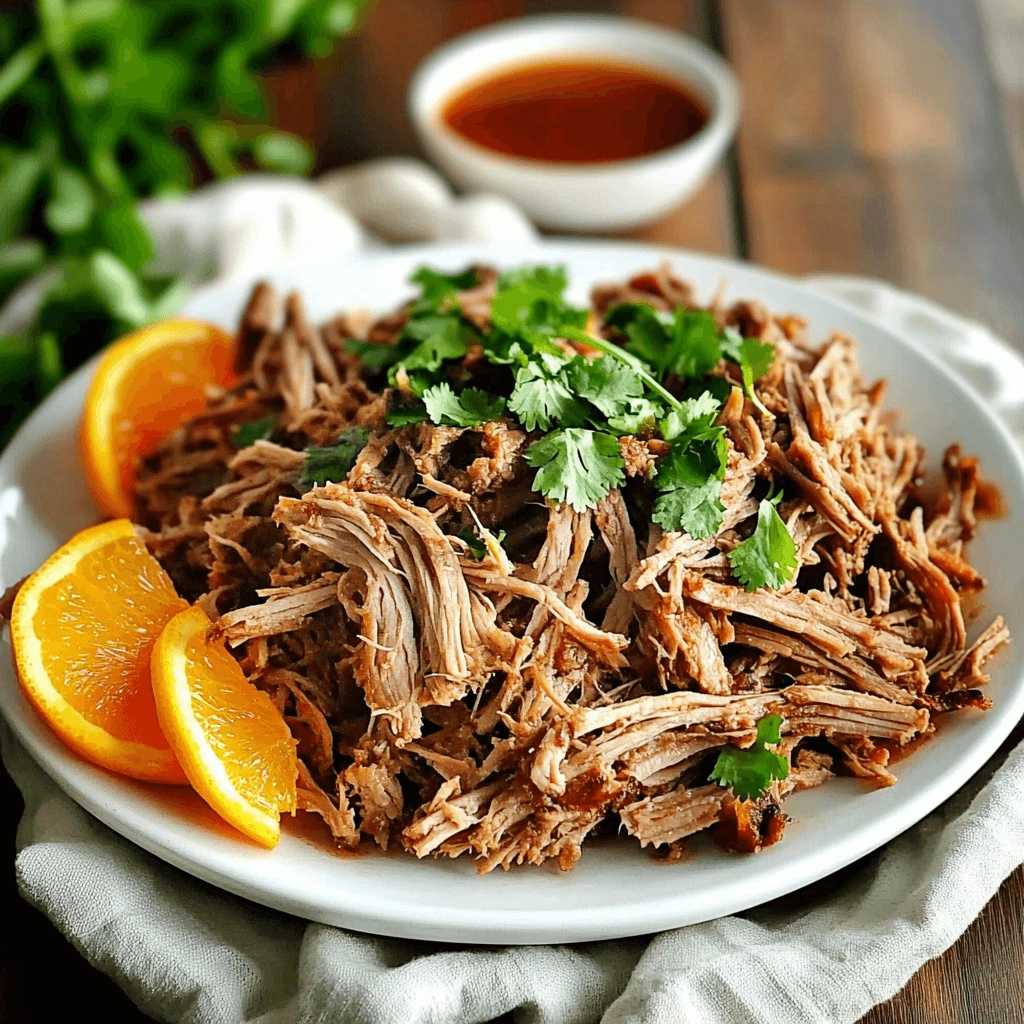
Slow Cooking
Slow cooking is a time-honored method for making carnitas. This technique allows the orange juice to gradually tenderize the meat and infuse it with flavor. Whether using a slow cooker or a pot on the stovetop, the key is patience—letting the beef simmer in its citrus marinade for hours results in a melt-in-your-mouth texture.
Braising
Braising combines searing and simmering to enhance carnitas. This is why do you put orange juice in carnitas—first, the beef is seared to develop a crust, then simmered in orange juice and spices. The orange juice tenderizes the meat and infuses it with sweet, tangy flavors while maintaining a rich, savory profile. This two-step method creates tender, flavorful carnitas with a perfect balance of crisp edges and juicy interiors.
Oven Roasting
Oven roasting offers a modern twist to traditional carnitas preparation. After slow cooking or braising, the beef is transferred to the oven to caramelize. The sugars in the orange juice contribute to crispy, golden edges while retaining a juicy interior. This technique is perfect for those who love the texture contrast in carnitas.
Why Do You Put Orange Juice in Carnitas for the Perfect Crispy Texture?
Achieving the ideal crispy texture for carnitas requires the right combination of techniques. One effective method is broiling or pan-frying the beef after it has been slow-cooked. This ensures that the exterior develops a golden, crispy crust while the interior remains tender and juicy. This is why do you put orange juice in carnitas—to take advantage of its natural sugars, which caramelize beautifully during the broiling or pan-frying process.
To further enhance the effect of orange juice, brush a little onto the meat before broiling. This extra step helps create a flavorful crust that is both sweet and tangy, perfectly complementing the savory richness of the beef. The contrast between the crispy outer layer and the soft, juicy interior is one of the reasons why do you put orange juice in carnitas. This method not only improves the texture but also ensures that every bite is bursting with flavor, making it a standout dish for any occasion.
Discover More: Find additional tips on achieving texture in dishes with Perfectly Round Mini Pancakes Tips.
What Spices and Ingredients Pair Well?
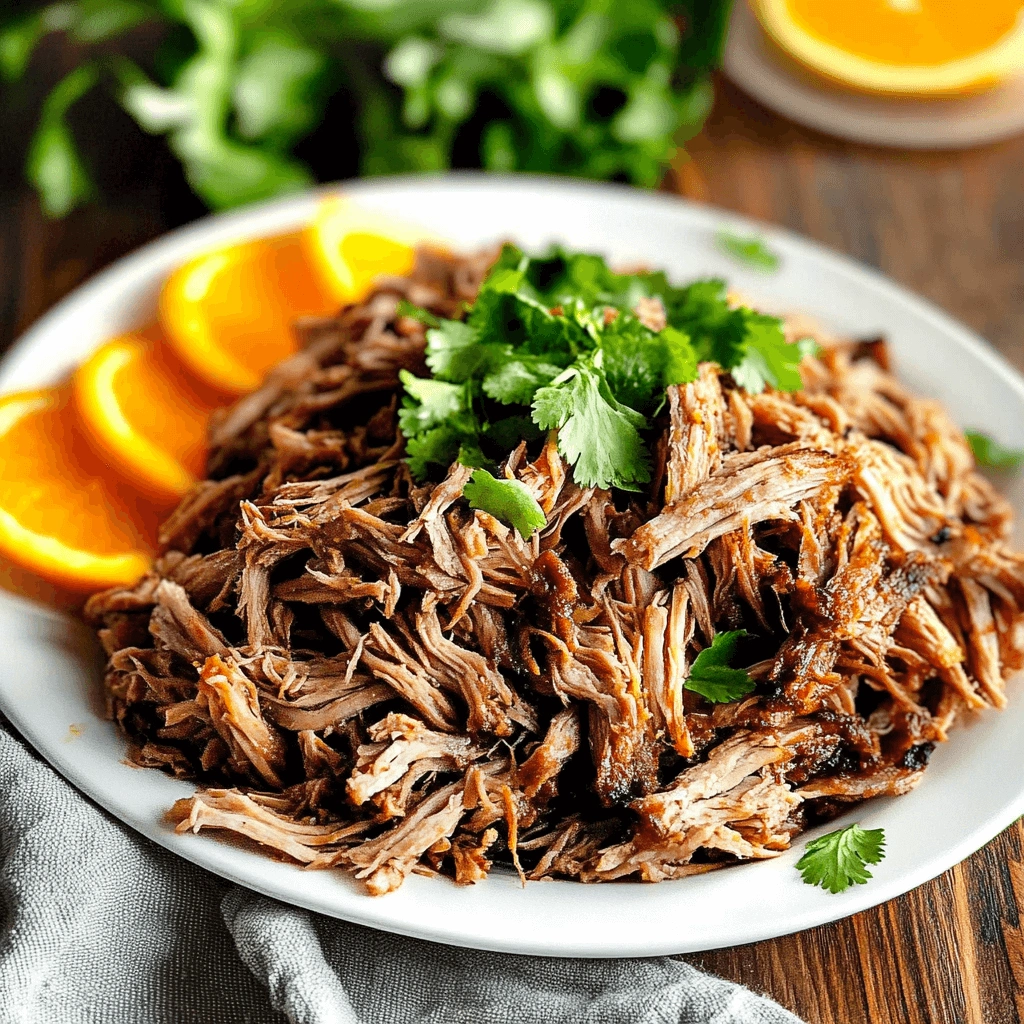
Classic Spice Blends
Cumin and garlic are staples in carnitas recipes, enhancing the citrusy notes of orange juice while adding warmth and depth. Together, these ingredients create a well-rounded flavor profile. Other common additions include oregano, bay leaves, and chili powder, which further amplify the dish’s complexity.
Why Do You Put Orange Juice in Carnitas Alongside Rice or Beans?
Carnitas are traditionally served with rice, beans, and tortillas, all of which complement the rich and tangy flavor of orange-infused beef. A side of fresh guacamole or pickled onions adds brightness, while a dollop of salsa verde ties the meal together.
Explore Pairings: For side dish inspiration, visit Corn Casserole Pioneer Woman: A Southern Classic.
FAQs
Why Do You Put Orange Juice in Carnitas Instead of Other Citrus Fruits?
Orange juice is often preferred over other citrus fruits for its balanced sweetness and acidity. While lime and lemon offer a sharper tang, they lack the natural sweetness that helps caramelize the beef and create a harmonious flavor. Grapefruit juice, on the other hand, can be too bitter for many palates, making orange juice the most versatile choice for tenderizing meat and enriching flavor.
That said, using other citrus fruits can yield unique results. For example, lime adds a zesty brightness, while grapefruit introduces a complex bitterness. These options are excellent for those looking to customize their carnitas recipe.
Related Reading: Curious about using citrus in different dishes? Check out the Spicy Orange Chicken Recipe Guide.
How Much Orange Juice Is Enough for Carnitas?
The ideal amount of orange juice depends on the quantity of beef and the desired flavor intensity. As a general rule, one cup of orange juice per two pounds of beef strikes a good balance. For leaner cuts, slightly less juice might be better to avoid overpowering the meat’s natural flavors. Conversely, fattier cuts benefit from a bit more juice to cut through the richness.
Creative Variations
Why Do You Use Other Citrus Fruits in Carnitas Instead of Orange Juice?
Experimenting with alternative citrus fruits allows cooks to create new flavor profiles while maintaining the essence of traditional carnitas. Some popular substitutions include:
- Lime Juice: Adds a tangy, refreshing twist.
- Grapefruit Juice: Introduces a subtle bitterness for a more complex flavor.
- Lemon Juice: Brings a sharp acidity that pairs well with garlic and cumin.
Each of these substitutions can be used on its own or blended with orange juice to create a unique balance.
Explore More: Learn about ingredient substitutions in What Add Bland Chicken Casserole.
Why Do You Put Orange Juice in Carnitas for International Twists?
Orange juice-infused carnitas can easily be adapted to other cuisines for a fusion twist. Here are a few ideas:
- Tacos al Pastor: Blend orange juice with pineapple juice for a tropical-inspired take.
- Asian-Style Carnitas: Incorporate soy sauce, ginger, and orange juice for a savory-sweet flavor profile.
- Mediterranean Carnitas: Use orange juice alongside oregano and olive oil, then serve with pita and tzatziki.
These fusion recipes showcase the versatility of orange juice and its ability to enhance dishes across various culinary traditions.
Why Do You Put Orange Juice in Carnitas for a Healthy Twist?
Why Do You Put Orange Juice in Carnitas for Added Vitamins?
Orange juice isn’t just about flavor—it’s a nutritional powerhouse. Rich in vitamin C, potassium, and antioxidants, it boosts the health profile of carnitas. These nutrients support immune function, improve digestion, and promote overall well-being. By using freshly squeezed orange juice, you can enjoy these benefits without the additives found in processed options.
Minimizing Sugars
Related Topic: Discover tips on balancing health and flavor in recipes like Healthy Chicken Apple Sausage.
Conclusion
Orange juice is more than just an ingredient in carnitas—it’s key to the dish’s flavor, texture, and cultural importance. Its acidity softens the beef, its natural sugars help create crispy edges, and its mix of sweetness and tang boosts the overall taste. From classic recipes to creative twists, orange juice’s flexibility keeps it a key part of Mexican cooking.
Whether you prefer a traditional style or want to try new flavors, orange juice offers many options. Its health benefits and role in improving both taste and texture make it an essential part of your next carnitas dish.
For additional cooking inspiration and tips, visit Food & Wine, a trusted resource for culinary expertise and tested recipes.

